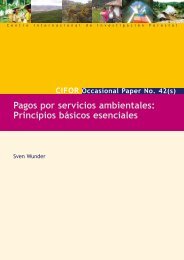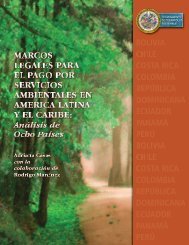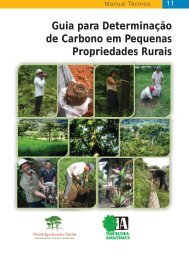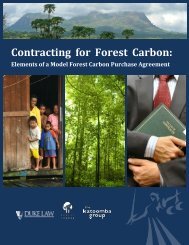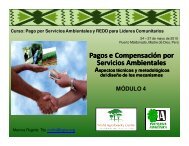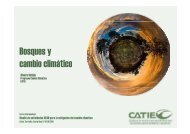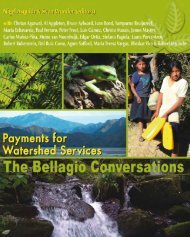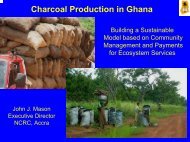Guide on Climate Change and Indigenous Peoples
Guide on Climate Change and Indigenous Peoples
Guide on Climate Change and Indigenous Peoples
- No tags were found...
You also want an ePaper? Increase the reach of your titles
YUMPU automatically turns print PDFs into web optimized ePapers that Google loves.
High altitude <strong>and</strong>High M<strong>on</strong>tane EcosystemsA significant number of indigenous peoples have inhabited high altitude 2or high m<strong>on</strong>tane areas since time immemorial. Mountain glaciers in Africa(Mt. Kilimanjaro), Asia (Himalayas) <strong>and</strong> South America (Andean Mountains)are melting in an unprecedented fast pace. In the Andes, the glaciers aremelting 10 times more thatthey did 20 years ago. 3 It isHigh altitude <strong>and</strong> high m<strong>on</strong>tane estimated that some of the- <strong>on</strong>e of the most inhospitable but important ice sheets <strong>and</strong> glaciers willecosystems of the world as these are where disappear within 15 to 25mountain glaciers are found which are the years <strong>and</strong> this will threatensources of freshwater for low-lying areas. water supplies to the majorStudies have shown that climate change has South American cities.caused faster <strong>and</strong> higher temperature rises in • The source ofhigh altitude ecosystems.subsistence for manyindigenous communitiesin this ecosystem are gravely threatened because of extreme <strong>and</strong>unprecedented cold spells alternating with warm weather which they arenot used to at all.• Diseases caused by extreme cold spells such as hypothermia, br<strong>on</strong>chitis<strong>and</strong> pneum<strong>on</strong>ia have been recorded in the Andes in 2003. Increase intemperature, <strong>on</strong> the other h<strong>and</strong>, also allows the migrati<strong>on</strong> of insectswhich becomepests for thecrops <strong>and</strong> alsocause diseasesfor the animals<strong>and</strong> people.• Loss of livestockwhich providethem food,clothing,beddings <strong>and</strong>insulati<strong>on</strong>as well asincomes forthe h<strong>and</strong>icraftsdevelopedfrom the wool ofthese animals have further made them more vulnerable to diseases <strong>and</strong>caused their impoverishment.PART II: Impacts of <strong>Climate</strong> <strong>Change</strong> <strong>on</strong> <strong>Indigenous</strong> <strong>Peoples</strong> 17



